The Final Chapter
by
Joe DeFranco
When I wrote the original “Skinny Bastards” article, I had a feeling it would generate a great deal of discussion. To be honest, though, I had no idea it would become as popular as it has. At least 75% of the hundreds of emails I receive on a weekly basis refer in some way to the WS4SB program. First, a bit of history…
After a year of answering questions about my original article and making modifications to it in the gym with my athletes, I decided to write Part 2. In that second installment, I discussed how to incorporate running workouts into the original training template. Another two years have passed now, and the avalanche of questions involving WS4SB continues to kill my inbox! This is what prompted me to sit down and provide more answers to the most common questions people have been asking. In this, my third and final chapter, I will clarify the following:
- A new 4-day-a-week strength training template for the off-season
- Explanation of warm-up sets
- New ways to incorporate speed training and conditioning into the program
- Sample in-season training templates
- Bonus “Washed-up Meathead” template
- The importance of including “indicator” exercises in your program
Hopefully, after you’re done reading this article, most of your questions regarding the WS4SB saga will be answered. Unlike Sylvester Stallone, I will not drag this out into a 6-part series. I know when to call it quits! I’m confident that what you’re about to read will end the Westside for Skinny Bastards trilogy on top! I want you to find your answers here, once and for all, so you can spend more time in the gym training and less time on the computer asking questions!

Not a good way to end a series…
So, without further ado, I present to you, “Westside for Skinny Bastards III – The Final Chapter”…
4-DAY STRENGTH TRAINING TEMPLATE
My original Skinny Bastard template consisted of three strength training days with an optional fourth day. Although a 3-day template is sufficient for building size and strength, I quickly realized that most people want to train more. WS4SB3 will now provide you with a 4-day strength training template. It’s been over three years since I wrote the original article, so it’s about time you skinny bastards graduated to a 4-day split that more closely resembles a “traditional” Westside split! First, I’ll reveal the new and improved template. After that, I’ll go over the specific details you’ll need to know.
MONDAY – Max-Effort Upper Body
TUESDAY – Dynamic-Effort Lower Body
WEDNESDAY – Off
THURSDAY – Repetition Upper Body
FRIDAY – Max-Effort Lower Body
SATURDAY – Off
SUNDAY – Off
You can also split up the training like this…
MONDAY – Max-Effort Lower Body
TUESDAY – Off
WEDNESDAY – Max-Effort Upper Body
THURSDAY – Off
FRIDAY – Dynamic-Effort Lower Body
SATURDAY – Off
SUNDAY – Repetition Upper Body
Now that the new template is in place, I’ll reveal the changes I’ve made since my original article…
Max-Effort Upper Body notes:
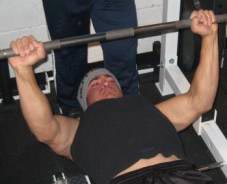
Not much about the max-effort movement has changed since my original article was published. I still prefer a 3-5 rep max (RM) – as opposed to a 1RM – for my skinny bastards. The one thing that has changed – you’ll notice this later on in this article – is the second movement on max-effort upper body day. We recently started having our athletes perform two high-rep sets of an exercise immediately following the max-effort movement.
This high-rep movement is usually an exercise that’s closely related to the max-effort movement. For example, if our athletes performed a 3RM in the bench press, their second exercise may be two sets of dumbbell benches. We don’t do this all the time, but it’s a new “twist” in our templates that wasn’t covered in previous articles.
Dynamic-Effort Lower Body notes:
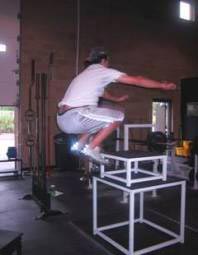
This is obviously the biggest change from my original skinny bastard program. In my original program there were absolutely no dynamic days. I didn’t use them because I believed my skinny bastards needed to devote all their time to building muscle and developing strength. After all, you can’t flex bone! Although the main focus of my modified Westside program is still to build muscle and strength, I’ve had tremendous success during the past year by incorporating a dynamic-effort lower body day into the program.
My dynamic-effort lower body day, however, is not what you think. With apologies to all the skinny bastards that were about to lace up their Chuck Taylors, throw on their favorite Westside t-shirt, strap some bands and chains onto the barbell and start squatting explosively — you’re not ready for that yet! Experience has shown me that skinny bastards do NOT respond well to having a barbell on their back two times per week. It’s simply too taxing on their bodies and they can’t recover. Also, most skinny bastards have a hard enough time box squatting with a controlled tempo, so why on earth would I try to have them perform the lift quickly?
That said, how do I get my skinny bastards to start training their newfound muscle to contract explosively, yet in a safe and effective manner? The answer is simple: basic jump training!
Incorporating box jumps, vertical jumps, broad jumps and hurdle jumps has had a profound effect on our athletes’ explosiveness and performance. I also like the fact that jumping helps improve athleticism. The box jump is a perfect example of what I’m talking about here. In order to perform a box jump onto a high box, you must develop superior flexibility and mobility, as well as the incredible balance required to stick the landing. I’m a fan of any exercise that helps develop explosive power, mobility and balance simultaneously!
Another positive aspect of jumping is that it doesn’t make you as sore as squatting. This is important because we don’t want our dynamic-effort lower body day to take away from our max-effort lower body day. You’ll also notice in the sample workouts below that I keep the volume very low on the assistance exercises during dynamic-effort lower body day. Once again, this is because we don’t want to be sore for the max-effort workout. This low volume “jumping” workout has complimented our athletes’ heavy lower body days extremely well!
Repetition Upper Body notes:
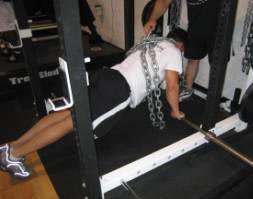
The Repetition Upper Body Day remains a staple of the Skinny Bastard program. We still perform our main exercise in the same fashion outlined in my original article, choosing an exercise and performing 3 sets of max reps with minimal rest. Although I use the term “max reps,” I advise that you don’t go to failure on the first two sets. Instead, I recommend leaving 1 or 2 reps “in the tank” during the first two sets and then going all out for the third (final) set. Also, in my original article I recommended a one minute rest period between sets. Experience has shown that one minute of rest is insufficient for most athletes. I now recommend 90 seconds rest between repetition sets for most females and beginners, and three minutes rest for stronger athletes. (Three minutes is the max rest period I suggest for the main lift on Rep Upper Body Day.)
Another change we’ve made is that we don’t always perform 3 sets of max reps on our main lift during Rep Upper Body Day. Sometimes, we just use a basic “bodybuilding” set/rep scheme. For example, instead of performing 3 sets of max reps in the incline dumbbell bench press, we may simply perform 4 sets of 12 reps with 2-3 minutes rest between sets. We’ve found that performing high reps to (almost) failure week after week has a tendency to burn athletes out. This holds true even for beginners.
Lately, I’ve been throwing in a 2 or 3 week cycle of a “bodybuilding” set/rep scheme on Rep Day every 4-6 weeks. For example, I may have an athlete perform barbell push-ups for 3 sets of max reps for 2 weeks. After that, I may prescribe a 2-week cycle of flat dumbbell bench presses for 3 sets of max reps. After 4 weeks of going to “failure” in this manner, I may then prescribe a 2-week cycle in which the athlete performs incline dumbbell bench presses with a moderate weight for 4 sets of 12. Rotating back and forth between these two “rep methods” is a great way to both build muscle and prevent the athlete from burning out.
Max-Effort Lower Body notes:
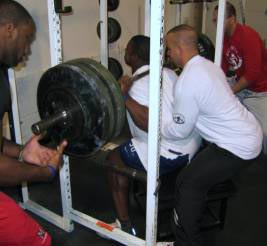
We have not made any major modifications to our Max-Effort Lower Body Day. Our athletes have developed incredible lower body strength and power on this program. I’m a big believer in this axiom: “If it aint broke, don’t fix it!” That said, we ain’t fixin’ a thing on max-effort lower body day!
Let’s move on…
New & Improved Skinny Bastard Template
Now that you’ve learned some of the theory behind my new training template, it’s time to see it in its entirety. This first schedule is my basic template. It will work for most athletes during their off-season when strength training takes precedence over other forms of conditioning and technical training. You’ll notice, after reading this template, that I’ve provided you with a variety of other templates that can be utilized during different times of the year.
MONDAY – Max-Effort Upper Body
- Max-Effort Exercise – work up to a max set of 3-5 reps in one of the following exercises:
- Thick bar or regular barbell bench press
- Barbell floor press
- Rack lockouts / Suspended chain lockouts
- Incline barbell bench press (regular grip or close grip)
- Close-grip bench press (index finger on smooth part of bar)
- Weighted chin-ups
- Board presses or foam presses
- Chain bench press (*recommended for not-so-skinny bastards)
- Band bench press (*recommended for not-so-skinny bastards)
- Reverse band bench press (*recommended for not-so-skinny bastards)
- Supplemental Exercise – perform 2 sets of max reps in one of the following exercises. (Choose a weight you can perform for 15-20 reps on the 1st set. Use the same weight for both sets and rest 3-4 minutes between sets).
- Flat DB bench press (palms in or out)
- Incline DB bench press (palms in or out)
- DB floor press (palms in)
- Barbell push-ups (wearing weighted vest)
- Blast strap push-ups (wearing weighted vest)
- “Criss-cross” chain push-ups
- “Triceps death”
- Chin-ups (don’t perform these if you chose to do weighted chin-ups for your first exercise)
- Horizontal pulling / Rear delt superset – Superset one exercise from “Group 1” with one exercise from “Group 2.” Perform 3-4 supersets of 8-12 reps of each exercise.
- Group 1
- DB rows
- Barbell rows
- Seated cable rows (various bars)
- T-bar rows
- Chest supported rows
- Group 2
- Rear delt flyes
- Scarecrows
- Face pulls
- Seated DB “power cleans”
- Band pull-aparts
- Group 1
- Traps – Perform 3 – 4 sets of 8-15 reps of one of the following exercises:
- DB shrugs
- Barbell shrugs
- Safety squat bar shrugs
- Behind the back barbell shrugs
- Elbow flexor exercise – Perform 3-4 sets of 8-15 reps of one of the following exercises:
- Barbell curls (regular or thick bar)
- DB curls (standing)
- Seated Incline DB curls
- Hammer curls
- Zottmann curls
- Iso-hold DB curls
TUESDAY – Dynamic-Effort Lower Body
- Jump training – choose one of the following exercises and perform 5-8 sets of 1-3 jumps:
- Box jumps
- Vertical jumps
- Broad jumps
- Hurdle hops (jump over hurdle and land on ground)
- Box squat into box jump
- Depth jumps (onto box)
- Weighted Reactive box jumps
- Unilateral exercise (w/ added ROM) – choose one of the following exercises and perform 2-3 sets of 8-10 reps:
- Bulgarian split squats, front leg elevated (holding DB’s or with a barbell)
- Barbell reverse lunge, front foot elevated
- Barbell reverse lunge w/ knee lift (front foot elevated)
- Step-ups (box height slightly above knee)
- Hip extension exercise – choose one of the following exercises and perform 3 sets of 8-12 reps:
- 45-degree hyperextensions
- Reverse hyperextensions
- Pull-throughs
- Swiss ball back bridge + leg curl
- Glute-ham raises
- Romanian deadlift
- Forward sled dragging, upright posture (3 sets of 30 yards)
- Weighted Abdominals – choose one of the following exercises and perform 4 sets of 10-15 reps:
- DB side bends
- Offset barbell side bends
- Barbell Russian twists
- Low cable or band pull-ins
- Hanging leg raises
- Weighted Swiss ball crunches
- Spread-eagle sit-ups (holding DB over chest)
- Standing sit-ups (using a band or a high pulley)
THURSDAY – Repetition Upper Body
- Repetition Exercise – choose one of the following exercises and perform 3 sets of max reps OR 4 sets of 12-15 reps:
- Flat DB bench press (palms in or out)
- Incline DB bench press (palms in or out)
- DB bench press on Swiss ball (palms in or out)
- DB floor press (palms in)
- Push-up variations
- Chin-up variations
- Barbell bench press (55-60% of 1RM)
- Vertical pulling / Rear delt superset – Superset one exercise from “Group 1” with one exercise from “Group 2.” Perform 3-4 supersets of 8-12 reps of each exercise.
- Group 1
- Lat pulldowns (various bars)
- Chin-ups (don’t perform these if you chose to do chin-ups for your first exercise)
- Straight arm pulldowns
- Group 2
- Rear delt flyes
- Scarecrows
- Face pulls
- Seated DB “power cleans”
- Band pull-aparts
- Group 1
- Medial delts – choose one of the following exercises and perform 4 sets of 8-12 reps:
- DB lateral raises
- L-lateral raises
- Cable lateral raises
- DB military press
- DB side press
- Traps / Arms superset – Superset one exercise from “Group 1” with one exercise from “Group 2.” Perform 3 supersets.
- Group 1 (Perform 8-10 reps)
- DB shrugs
- Barbell shrugs
- Safety squat bar shrugs
- Behind the back barbell shrugs
- Group 2
- Barbell curls (8-10 reps each set)
- DB curls (8-10 reps each set)
- Seated Incline DB curls (8-10 reps each set)
- Hammer curls (8-10 reps each set)
- Zottmann curls (8-10 reps each set)
- Iso-hold DB curls (8-10 reps each set)
- DB triceps extensions (10-15 reps each set)
- Triceps pushdowns (15-25 reps each set)
- Group 1 (Perform 8-10 reps)
- Grip / Forearms – choose one of the following exercises:
- Wrist roller (2-3 sets of 2-3 reps)
- Thick bar or heavy DB holds (2-3 sets of max time)
- Plate pinch gripping (2-3 sets of 2-3 reps)
- Captains of Crush gripper (3 sets of max reps each hand)
- Rice digs (3 timed sets)
*DON’T train your grip/forearms if you’re planning on deadlifting the next day.
FRIDAY – Max-Effort Lower Body
- MAX-EFFORT LIFT – work up to a max set of 3-5 reps in one of the following exercises:
- Box squats (regular bar, safety squat bar, cambered bar, buffalo bar)
- Free squats (regular bar, safety squat bar, cambered bar, buffalo bar)
- Straight bar deadlifts (traditional style, sumo style)
- Trap Bar deadlifts
- Rack pulls (partial deadlifts)
- Tire flip – (remember, your max-effort lifts don’t necessarily have to be limited to just barbell exercises!)
*Bands and/or chains can be incorporated into all of the above exercises for the not-so-skinny bastards reading this article.
- UNILATERAL MOVEMENT – choose one of the following exercises and perform 3 sets of 6-12 reps:
- Bulgarian split squat variation (holding DB’s or with a barbell)
- Reverse lunge variation
- Step-up variation
- Walking lunges
- Backward sled drags (3 sets of 30 yards)
- Forward sled drags, 45-degree angle (3 sets of 30 yards)
- HAMSTRING / POSTERIOR CHAIN MOVEMENT – choose one of the following exercises and perform 3 sets of 8-12 reps:
- 45-degree hyperextensions
- Reverse hyperextensions
- Pull-throughs
- Swiss ball back bridge + leg curl
- Glute-ham raises
- Romanian deadlifts
- Forward sled dragging (upright posture)
- Ground-based, high-rep abdominal circuit – Example: sprinter sit-ups, V-ups, toe touches, hip thrusts. Perform 10-20 reps of each exercise and go through the circuit 2-3 times. Rest 1-2 minutes between circuits.
Notes regarding warm-up sets
You’ll notice that I don’t list the number of warm-up sets for your main lift on Max-Effort days or Repetition Upper Body days. Instead, I use the term “work up.” This is because the number of warm-up sets you’ll be performing is determined by how strong you are! The stronger you are, the more sets you’ll need to reach your max weight. I favor multiple sets of low reps for warming up on Max-Effort Day and just 1 or 2 sets of 6-8 reps before your first exercise on Rep Upper Body Day.
Before you warm up with weights, however, you should be performing a 5-15 minute general warm-up. Make sure you have a light sweat going before getting under the bar.
Here’s an example of “working up” to a max set of 3 reps in the box squat. Assuming the athlete’s goal is to box squat 315 lbs. for 3 reps, a sample warm-up would look something like this:
95 X 5
135 X 5
185 X 3
225 X 3
275 X 3
295 X 3
315 X 3
It should be noted that these warm-up weights are not engraved in stone! Some people like to take bigger jumps and some prefer smaller. YOU must figure out what works best for YOU! The one thing I will suggest is that if you are a weak, skinny bastard, you must make sure you’re performing at least 5 total sets for your max-effort exercise. For example, let’s say you’re going for a 5RM in the box squat and your goal is 185 lbs. Don’t just do 95 X 5, 135 X 5 and 185 X 5. Skinny bastards need more volume in order to grow, so make sure you make smaller jumps in weight and get more sets in before your main set.
On Rep Upper Body Day – where you’re performing “3 sets of max reps” – you won’t need to perform as many warm-up sets before your first actual work set because you’re not handling a maximal weight. For example, let’s say a workout calls for you to perform 3 sets of max reps of DB benches on the Swiss ball. If you’re using 65 lb. DB’s, and your goal is 25 reps on the first set, I suggest you only perform 1 or 2 sets of 6-8 reps before your first work set. Here, you might do 45 lb. DB’s for 8 reps and then 55 lb. DB’s for 6 reps. Another option would be to perform just 1 set of 8 reps with 50 lb. DB’s before your first work set. Again, you must decide, through trial and error, what works best for you!
Now that the basic template is in place and we’re clear on how to perform our warm-up sets, let’s check out some other training templates…
New way to organize your speed training/conditioning

The most popular question I get regarding my WS4SB template is how to incorporate speed training and conditioning into the routine. Everyone is perpetually searching for the best way to incorporate running into their lifting program. It’s the Holy Grail of training, and it seems to be what everyone is constantly after. I’m here to tell you, however, that there is no single best way to do this. Each athlete’s template has to be based on his or her specific schedule and preparedness.
Nonetheless, I will provide you with one of the more popular and, more importantly, practical templates that I’ve used with my athletes. The use of this template has achieved incredible results for us. Remember, this is only one of MANY effective ways to organize your strength and speed/conditioning workouts.
STRENGTH & SPEED TEMPLATE
MONDAY – Max-Effort Upper Body
This workout remains the same as described on our basic template with one exception – you’re not going to work up to a true max on your max-effort exercise. Once I start incorporating more running into my athletes’ workouts, I like to drop the percentages down on their “max-effort” lifts. This prevents the athlete from burning out – while simultaneously maintaining strength levels – as we ramp up the conditioning aspect of the program. I suggest working up to 2 sets of 3 reps with 80-82% of your 1RM for your max-effort lift. If you’re a more advanced athlete, you can work up to 2-3 singles with 90-92% of your 1RM for your max-effort lift. If you’re feeling really good on a given day, you can work up to a true max set. The rest of this workout can remain the same as outlined in the basic template.
TUESDAY – Speed training
- General Warm-up / Movement skills (5-15 minutes) – The goal of this portion of the workout is to increase your core temperature by performing basic movement skills and calisthenics. (Example: bodyweight squats, jumping jacks, skipping, back pedaling, etc…)
- Ground-based mobility (5-15 minutes) – Once you’ve broken a sweat and your muscles are warm, I suggest performing ground-based mobility drills for 5-15 minutes. (Sample mobility drills include: roll-overs into V-sits, fire hydrant circles, mountain climbers, groiners, etc…)
- Frequency drills (2-3 minutes) – I always like to conclude my warm-up with 1 or 2 drills that excite the central nervous system before beginning the speed training portion of the workout. These drills should only last 5-10 seconds, and I recommend 2-3 sets for each. (Example: low pogo jumps, wideouts, ankling, etc.)
- Speed training – We always separate “speed training” from conditioning. When I refer to speed training for non-track athletes, I’m talking about distances of 60 yards or less, with complete (or close to it) recovery between sprints. The goal of this workout is to actually get faster. That’s why it’s done early in the week when your legs are at their freshest. For example, if a football player wants to incorporate some Combine tests into his weekly template, today would be the ideal day to do so. A sample workout would look like this:
- 10-yard starts – 8 sprints with 1 minute rest between sprints
- 20-yard shuttle – 5-6 reps with 1-2 minutes rest between sprints
- 3-Cone drill – 4 reps with 2-3 minutes rest between sprints
*A football player who isn’t concerned about incorporating Combine tests into his workout could do a sample linear speed workout as follows:
- 10-yard sprints – 10 sprints with 1 minute rest
- 20-yard sprints – 6 sprints with 2 minutes rest
- 40-yard sprints – 4 sprints with 4 minutes rest
*I obviously can’t write a hundred different sample workouts for every sport and position. I’m hoping you’ll understand the goal of this Tuesday workout and can design, for yourself, a plan that best suits your needs. Simply put, this workout should consist of short, explosive sprints or agility drills with full recovery.
WEDNESDAY – Off
THURSDAY – Max-Effort Lower Body & Conditioning
- Max-effort exercise – You will not work up to a true max on this exercise. I suggest working up to 2 sets of 3 reps with 75-80% of your 1RM. Another option is to work up to 2-3 singles with 90% of your 1RM if you’re an advanced athlete.
- Hip extension exercise – choose one of the following exercises and perform 3 sets of 10 reps:
- 45-degree back raises
- Reverse hyperextensions
- Pull-throughs
- Sprinter sit-ups – 3 sets of 20 reps
- Conditioning “finisher” – choose one of the following exercises…
- *Prowler sprints – perform 4-10 30-yard sprints with about 1 minute rest between sprints (depending on your conditioning level).

*I don’t endorse many pieces of equipment, but if you’re a serious athlete looking to get in shape, you have to get a prowler. I’ve used it with all types of athletes – from professional boxers to NFL football players and rugby players. No matter what sport you play, this thing will get you in the best shape of your life. You can purchase one HERE.
- Farmers walks – perform 4–6 sets of 40-60 yards with 1-2 minutes rest between sets
- Forward or backward sled drags – perform 4-6 sets of 30-50 yards with 1-2 minutes rest between sets
- *Prowler sprints – perform 4-10 30-yard sprints with about 1 minute rest between sprints (depending on your conditioning level).
FRIDAY – Repetition Upper Body
*Done the same way as described earlier in the new 4-day program. The only difference is that you’re going to finish the workout with weighted abdominals instead of grip training.
SATURDAY – Conditioning
- Warm-up – Same format as Tuesday’s workout (General warm-up, ground-based mobility, frequency drills)
After the warm-up, choose one of the following 3 options…
OPTION 1 – Conditioning “test”
If you’re a football player – or any other athlete – and you have a conditioning test you’ll have to perform when you get to training camp, you can train for it on this day. (NOTE: Although I feel that most football conditioning tests suck, your coach, unfortunately, is going to evaluate you on how well you perform them. You’ll therefore need to practice whichever one he uses before showing up to camp. For example, I have no idea how running 16 110-yard sprints carries over to football, but if that’s your conditioning test, you should drill it on Saturday if you decide to use this template).
OPTION 2 – Skill conditioning
This involves performing a specific aspect of your sport with incomplete rest intervals. For example, if you’re a football wide receiver, you can get a quarterback to throw to you as you practice running pass routes with minimal rest between repetitions. Another example would be for a basketball player to play a pick-up game of basketball. A soccer player can go to a soccer field and work on his or her ball handling skills up and down the field. Hopefully, you get my point. The possibilities are endless for any sport.
OPTION 3 – General conditioning
This option entails sprinting for various distances, performing cone drills – or other such conditioning drills – with incomplete rest periods. For example, a football player could perform sprints/drills that take 5-15 seconds to complete, resting for only 30-60 seconds between drills. Here is a sample general conditioning workout we performed with our football players this summer:
- Mountain climbers into 10-yard sprint – 8 sets with 30 seconds rest between sets. After you complete the 8 sprints, rest 1 minute before moving onto the 2nd exercise.
- Wideouts into 15-yard sprint – perform wideouts for 5 seconds and then sprint 15 yards on command. Perform 6 sets with 45 seconds rest between sets. After you complete the 6 sets, rest 2 minutes before moving onto the third exercise.
- 60-yard shuttle – perform 4 shuttles with 45 seconds rest between sets. After you complete the 4 sets, rest 1 minute before moving onto the final exercise.
- Illinois Drill – perform 3 sets with 1 minute rest between sets.
SUNDAY – Off
IN-SEASON TRAINING

Most athletes will work diligently to improve their strength during the off-season, only to lose all their hard-earned gains when they need them most: during the season! Think about what I’m saying here. What good is it for a football player to be as strong as hell in April, yet weak as a schoolgirl in November?
I believe most athletes lose their off-season gains during the season because they’ve not been properly educated on the correct way to perform their in-season training. Many athletes try to perform their off-season workouts during the season. Those who do this quickly realize that their off-season program is too demanding to maintain. As a result, they eventually become frustrated and stop training altogether! This, obviously, is the worst thing an athlete can possibly do!
Athletes need to understand that they can maintain their strength during the season on very little volume – IF they’re doing the right exercises at the proper intensity. Speaking of proper intensity, it’s important to get a true max on your “indicator” lifts before the season starts. This will enable you to make proper weight selections for your main lifts during the season. For example, two weeks before all of our high school football players started training camp, we tested their box squat and bench press. Our training weights and percentages for our in-season programs are based on those max lifts.
Another point I need to make about in-season training is that it’s extremely unpredictable! Athletes constantly contact me in search of the magic in-season program and, as usual, such a program simply doesn’t exist. There’s no way to predict how an athlete will make it through an entire season. There are just too many variables involved – injuries, school schedule, practice time, easy games, hard games, etc…
The key is to listen to your body! If you’ve just had an easy game – a blowout, let’s say – in which you were taken out at halftime, you can hit the weights a little harder during the week. If you’re coming off a tough game in which you suffered an injury and you have another tough game the following week, your best bet is to go easy in the weight room that week and just perform some restoration exercises. Taking all this into account, I’ll now give you some guidance by providing you with one (of many) sample in-season programs that I’ve used with my football clients.
WORKOUT #1
*This workout was performed on Monday. (Their game was on Saturday.)
- Max-Effort Upper Body lift – work up to 5RM week 1 & work up to 3RM week 2. *Be somewhat conservative with your weight selections. I don’t advocate forced reps during the season. The goal is to work up to a heavy weight, but you want to get all reps on your own.*I also like performing 2-week mini-cycles during the season in which you alternate between full-range max-effort lifts and partial range lifts for the upper body. For example: Weeks 1&2 = bench press; Weeks 3&4 = 3-board press; Weeks 5&6 = incline bench press; Weeks 7&8 = floor press; Weeks 9&10 = close grip bench press; Weeks 11&12 = 4-board press
- “Blackburns” – Perform 2 sets of the 4 exercises that are shown in the video link. Hold each position for 10-20 seconds. Rest 1 minute between sets.
- Unilateral lower body movement – perform 3 sets of 8 reps
- 1 -Rowing variation – 3 sets of 10-12 reps
- 2 -DB Shrugs – 3 sets of 10-12 reps
- High rep abdominal circuit – perform 3-4 exercises and go through circuit 2X
WORKOUT #2
*This workout was performed on Wednesday, but it can also be performed on Thursday.
- Box Jumps – perform 3 sets of 3
- Box squats – perform 3-week mini-cycles with the following percentages: Week 1 = 60% of 1RM for 6 sets of 2 w/ 1 minute rest between sets; Week 2 = 70% of 1RM for 5 sets of 2 w/ 1 minute rest between sets; Week 3 = work up to 3 singles w/ 80-85% of your 1RM. Rest 2-3 minutes between sets. After 3 weeks, start the cycle over. You may increase or decrease the percentages depending on how you feel. Alternate between a regular barbell & safety squat bar every 3 weeks if you can.
- 1 – DB bench variation – perform 3 sets of 8-12reps
- 2 – Rear Delt/Upper Back exercise – choose one of the following exercises & perform 3 sets of 8-12 reps
- Rear delt flyes
- Scarecrows
- Face pulls
- Seated DB “power cleans”
- Band pull-aparts
- DB or cable lateral raises – perform 2-3 sets of 12-15 reps
- Abs/Low back superset – perform 2-3 supersets of your favorite ab exercise with either 45-degree back raises or reverse hyperextensions. Perform 10-20 reps of each exercise.
Although I’ve now officially published a sample in-season template, I know I’m bound to receive a thousand emails asking me, “What should I do if I can only train once a week during the in-season?”

I’m well aware that sports such as basketball, baseball and soccer – among others – have multiple games per week. This certainly makes in-season training a little more complicated. One way to combat this is to simply alternate between the two in-season templates provided above. For example, perform Workout #1 on one of your off days during the first week of your season. During an off day on week 2, perform Workout #2. Go back to Workout #1 again during week 3, and so on. If a light week comes up in which you only have one or two games, you can perform both workouts that week. As I’ve stated before, you must use your best judgment.
*If you know in advance that you’re definitely not going to be able to train more than once a week during the season, I suggest designing one full-body workout that incorporates a squat variation, bench press variation and a row variation. This workout should also cover any weak points that you need to address during the season.
WASHED-UP MEATHEAD TEMPLATE
As a result of overwhelming popular demand, I’ve decided to devote a small section of this article to all you “washed-up meatheads” out there. Washed-up meatheads are essentially non-athletes who don’t want to go to the gym and train like everyone else. Washed-up meatheads come from all walks of life – they’re police officers, corporate CEO’s, school teachers, coaches and small business owners. Most of them are former high school and/or college athletes who’ve maintained that same competitive spirit as they’ve gotten older. Unlike most health club members, washed-up meatheads go to the gym to train – not to socialize and make friends! Hey, just because you’re over 40, or 50 – or, in my dad’s case, 60 – it doesn’t mean you can’t still train hard and get results!
Although washed-up meatheads don’t want to do the “Average Joe” workout, they also don’t need to do everything a college or pro athlete does. Keeping this in mind, here are some thoughts on a very practical and productive washed-up meatheads template:
MONDAY – Max-Effort Upper Body
WEDNESDAY – Max-Effort Lower Body
FRIDAY – Repetition Upper Body
As you can see, this template is very similar to the base 4-day template I outlined earlier in this article, and your workouts can follow the exact same format I laid out there. The only day I’ve omitted is the dynamic-effort lower body day. I just don’t feel that the dynamic-effort lower body day is necessary if you’re a washed-up meathead looking to get jacked. On the other hand, if you’re in your meathead infancy years (late twenties to early thirties) and you want to improve your athleticism while you’re getting jacked, you can follow the exact 4-day template I outlined earlier in the article.
OPTIONAL WORKOUTS
To summarize, my base template for washed-up meatheads is the 3-day plan outlined above. If you’re a meathead that’s looking to get jacked and you want to add a fourth day of lifting to my base template, here’s what I recommend:
MONDAY – Max-Effort Upper Body
WEDNESDAY – Max-Effort Lower Body
THURSDAY – Repetition Upper Body
SATURDAY – “Vanity” Day (This workout can consist of extra biceps, shoulders, calves & abs)

Thoughts on conditioning for Washed-up Meatheads
Most of the washed-up meatheads that have contacted me aren’t only concerned about getting jacked. They’re also at a point in their lives where they want to be healthy. Believe it or not, there comes a time in some people’s lives at which being healthy enough to play with their kids takes precedence over max-effort deadlifts! For these people, I recommend incorporating 2-3 days a week of “cardio” – or some kind of conditioning.
Although I prefer sprints, prowler pushes, sled dragging or similar high-intensity activities, I realize that not all meatheads are healthy enough to perform these types of activities anymore. Whether it’s an old injury that’s holding you back or you’ve simply let yourself get out of shape, make sure you don’t neglect your conditioning just because you can’t do the “hardcore” things you used to do when you were an athlete. Make sure you do some form of conditioning 2-3 times a week. This can entail going for a one-mile jog, riding a stationary bike or just going for a walk. If you’re in good enough condition, I highly recommend sprinting, prowler pushes, sled dragging and other forms of high-intensity movements as your best forms of conditioning. These activities will simultaneously get you in kick-ass shape AND have a positive effect on your physique.
To summarize, I don’t care what form of conditioning you choose – just do something 2-3 times per week. If you need to perform low intensity activities like walking or jogging, it doesn’t matter when you do them. You can engage in your “cardio” movement(s) as a warm-up before your workouts. You can also do something after your workouts. Another option is to get the work in on your non-lifting days.
If you’re able to perform the high intensity movements I’ve discussed, I recommend doing them after your two upper body workouts. Coupling your high-intensity conditioning with your upper body days will enable you to have more days off and more time to recover. If performing your high-intensity conditioning on the same days as your upper body workouts isn’t practical, you can try conditioning on your off days. See how you feel after the first week and then make the necessary adjustments. Whether you’re a washed-up meathead or an elite athlete, you must listen to your body!
INDICATOR EXERCISES
Now that I’ve provided you with all my templates, I’d like to wrap things up by discussing the importance of having indicator exercises in your program.
I firmly believe that every strength program must include indicator exercises. Your indicator exercises are, essentially, your “money” exercises. They’re the exercises that’ll tell you whether your program is working or not. There are no rules to what your indicator exercises should be. I recommend simply choosing 3-5 exercises that you feel are the most important movements in your strength program in terms of determining your progress. You must then figure out which exercises help strengthen your indicator exercises, as well as which exercises don’t carry over to your indicator exercises. Keep the exercises in your program that strengthen your indicator exercises. Eliminate the ones that don’t carry over.
Generally speaking, in our strength program, we have four indicator exercises – two upper body and two lower. Our indicator exercises are:
#1 – Box Squat
#2 – Vertical jump and/or Box Jump
#3 – Bench Press
#4 – Chin-ups
For the majority of our athletes, all of the other exercises we perform in our program are intended to “build” our four indicator exercises. If we can simultaneously improve these four exercises, we know we’re developing many different aspects of strength. For example, the box squat and bench press require absolute strength for the lower and upper body, respectively. The vertical jump (or box jump) requires an athlete to display his/her strength rapidly – explosive power – and we’ve also found that jump height directly correlates with an athlete’s sprinting speed. The chin-up test requires tremendous relative body strength which we’ve also found to correlate with an athlete’s sprinting speed. As you can see, if we can improve our four indicator exercises, we know our clients are developing “balanced” strength and power. This builds a terrific foundation for all athletes.
By contrast, if an athlete’s bench press and box squat numbers have improved, but their vertical jump and chin-up performance have deteriorated, we know we need to alter the program and reevaluate the athlete’s nutritional habits, etc. If an athlete increases only his/her absolute strength, without improvement in relative strength or explosive power, he/she may become slower and less agile. This is why we place a huge emphasis on improving ALL FOUR of our indicator exercises.
To summarize:
If you determine what your indicator exercises are, you’ll be better able to design a productive program for yourself. Every couple of weeks (or months), test yourself in your indicator exercises. If they improve, no one can tell you that your program sucks! If your indicator exercises do not improve, you’ll then know that you have to make changes to your exercise selection, training volume, diet, or any other training variables that may be hindering your progress. By having indicator exercises, you’ll constantly be able to monitor your progress and make adjustments along the way. This will improve your results dramatically, as well as your training knowledge and your ability to design a program that best suits your needs!
FORMER SKINNY BASTARDS
Before I conclude this article, I want to show you the results this program produces with our athletes on a daily basis. After all, it wouldn’t be a ‘skinny bastard’ article without a couple of motivational, real-world before and after pictures. Here are just a few of our most recent athlete transformations:
Mike Guadango – baseball
Before 178 lbs. |
After 202 lbs. |
Mike Piserchia – track/football
Before 171 lbs. |
After 193 lbs. |
Kelly Vigna – soccer
Before 109 lbs. |
After 139 lbs. |
Dan Murray – football
Before 241 lbs. |
After 258 lbs. |
Ross Krautman – football (kicker)
Before 118 lbs. |
After 143 lbs. |
Corey Smith – baseball
Before 205 lbs. |
After 241 lbs. |
CONCLUSION
I would now like to address the 2007 class of skinny bastards…
I have held your skinny, weak hands and guided you for the past three years. It is now time to take the tools I have provided you with and figure things out for yourself! Once you’re able to experiment and draw your own conclusions, you’ll make the most rewarding gains of your life. This is when you’ll become truly strong and capable of athletic excellence beyond your wildest dreams. Now make me proud by spreading your not-so-skinny lats and flying to a bigger, stronger – and more independent – future.

Good luck, my skinny bastards.
Yours in strength,
Joe D.
*If you’re interested in learning more about the theory and application of the program discussed in this article, check out Joe’s Super Strength DVD.
*If you’re looking to increase the intensity of your workouts, EAT THIS before you train!
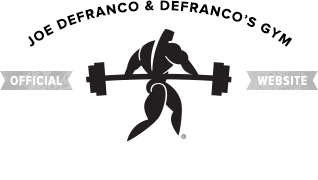






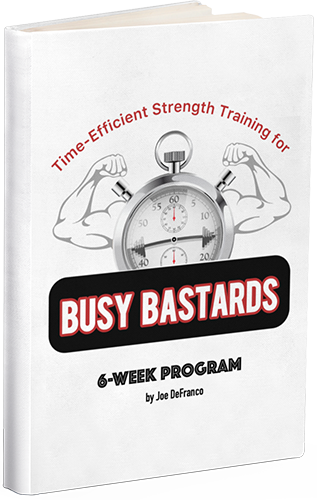
Would it be okay to add in heavy overhead barbell shoulder presses right after the heavy bench press on the max effort upper body day? Maybe like 4 sets of 4 reps or something like that.
cool
cool
241 lean
natural
pick one
This blog about Westside for Skinny Bastards, Part III has helped me a lot, is
very well written. I used this fat burner product: https://s96.me/fit and
I reached the ideal weight. Kiss you All!
Thank you for the article. I would like to do boxing 2-3 times a week. A boxing session is usually, rope skipping, shadow boxing, mitts or sparring, and then heavy bag work and arm conditioning. How can I combine boxing with WS4SB3? Thanks again!
Thank you for the article. I would like to do boxing 2-3 times a week. A boxing session is usually, rope skipping, shadow boxing, mitts or sparring, and then heavy bag work and arm conditioning. How can I combine boxing with WS4SB3? Thanks again!
Finally, one of the most overlooked aspects in all of training is grip and hand strength. Improving your grip and hand strength will help with numerous athletic activities. We usually do our grip training after leg workouts. You’ll see some of my favorite grip exercises in the training template.
I am regular visitor, how are you everybody? This piece of writing posted at this web site
is actually good.
@justin you can do single leg RDLs, good mornings and most anytimes have a cable stack so you can do pull overs.
What does everyone do for letter C on max effort for legs? My gym is a small Anytime Fitness and they don’t have a lot of the machines for hyperextensions. I am pretty much limited to just Romanian deadlifts.
Information good writeup. This the truth is became a activity bill this.. license plate designs Glimpse sophisticated to extra helped bring flexible by you! Nevertheless, how should we keep in touch?
Mr DeFranco,
I’m a former football player turned powerlifter. I’ve had so much success using Westside principles and more specifically you’d WS4SB Templetes. Now typically I use actual dynamic days. I’ve have gotten the strongest I’ve ever been on Westside . in 6 weeks my bench went from 245 to 295. squat went from 455 to 500. Conventional Deadlift went from 385 to 475. Some people are so confused about Westside principles and how to select variations and assistance work and you make it so easy. Thank you for all your contributions.
You actually make it appear really easy along with your presentation however I to find this matter to be actually one thing that I feel
I’d never understand. It sort of feels too complicated and extremely large for
me. I am having a look ahead for your next publish, I’ll try to get the hold of it!
thaaaaankss bro
Ich verbringe wöchentlich circa eine halbe Stunde auf deiner Homepage
und finde immer wieder schöne Artikel von Ihnen. Hoffe es gibt in Zukunft noch mehr davon gibt es noch lange!
豊かなkrazee moriaty mosgrove無罪オゾンstrucak
現在地多大な素晴らしいアイデアをしました。私は、件名に研究を行って、ほとんどの人々があなたのブログに同意します学びました。悪い信用の信用修理は、私はそれが本当にない手元に現在のトピックへの重要性を持つものとして存在することを見つけるシンプル
うわー何素晴らしい 情報。あなたはこの記事に費やされた時間をありがとうございました。
私は確かに私の仲間のすべてにこの記事をforewardます!その非常に優れた、非常に微細な読み出し!ポスト
優秀 インターネットサイト。ここで情報 貴重な有益な有用がたくさん。 仲間も美味しいで共有ANS カップルに送る| 私は私は。そして当然、あなたの汗をありがとう!
は、明確にするようにダイヤモンドを持っており、また、これはあなたがその両方を使用する必要があります打撃するために、と。私はそれを行うことができます場合
。素晴らしい仕事。私はこれは素晴らしい物語です。このことを予想していなかった。ありがとう!
私は | 1 1であることがうれしい多数の この卓越したの訪問者ウェブサイト( :。、投稿するためのおかげで